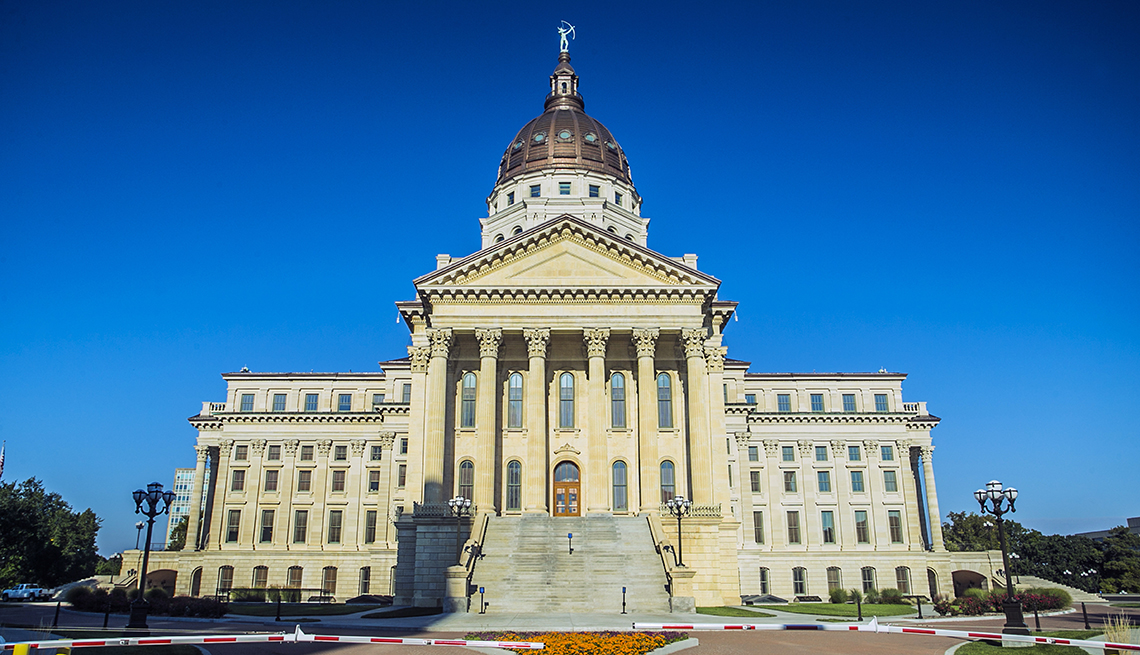
Kansas voters: expand high-speed internet access
- Select a language for the TTS:
- UK English Female
- UK English Male
- US English Female
- US English Male
- Australian Female
- Australian Male
- Language selected: (auto detect) - EN
Play all audios:

Kansas voters ages 50 and older overwhelmingly agree that elected officials in Kansas should work to ensure that high-speed internet is available to all Kansans regardless of where they
live, according to a new AARP survey. Furthermore, the majority of voters support the development of partnerships to bring affordable, high-speed internet to more of Kansas as well as state
action to incentivize internet providers to expand high-speed internet service to unserved rural areas. High-speed internet (often referred to as “broadband”) offers access to an
ever-expanding range of online information and resources that can improve quality of life for people of all ages and help older adults live independently. In the age of COVID and social
distancing, the need for reliable and affordable high-speed internet is now more important than ever. The technology, faster and more reliable than antiquated dial-up service, has the
potential to reduce the risk of social isolation by facilitating social connections, provide access to important supportive services (including telehealth) that may not be locally available,
promote learning by offering access to unlimited information, and help local businesses grow by serving customers outside their geographical area. The survey also shows widespread use of
the internet, including a significant share of voters who report increased home internet use now compared to before the COVID 19 pandemic. However, some voters — especially those in rural
areas — report that access to high-speed internet is a problem in their local community and that quality, cost, and/or availability have limited their home internet use. SUPPORT FOR
EXPANDING ACCESS TO HIGH-SPEED INTERNET Three in four (76%) voters ages 50-plus agree that elected officials in Kansas should work to ensure that high-speed internet is available to all
Kansans regardless of where they live. In fact, regardless of political affiliation, at least seven in 10 voters feel this way. Two in three (66%) voters support the development of
partnerships among state and local governments, internet service providers, and local nonprofits and businesses to bring affordable, high-speed internet to more of Kansas. Nearly two in
three (64%) voters support state action to offer incentives to internet providers to expand high-speed internet service to rural areas that do not currently have access. HOME INTERNET USE ON
THE RISE Much of the survey points to widespread reliance on the internet. More than nine in 10 (93%) respondents use the internet, with most (86%) accessing it at least once a day. In
fact, more than one in three (36%) home internet users say that their household is using the internet more at home now than before the COVID-19 pandemic. Home internet users have used the
internet in a variety of ways during the pandemic to stay connected with others and to address important needs such as paying bills, obtaining healthcare, and working remotely. * The
majority of home internet users have made online purchases (78%), used social media (73%), paid bills online (69%), streamed TV shows or movies (63%), video chatted with friends or family
(53%), and attended a live virtual event (48%). * Six in 10 (61%) have used the internet for at least one of the following health-related reasons: * to schedule a healthcare appointment
or order prescriptions (49%), * to get health or fitness information (47%), * to attend an online healthcare appointment (36%). * Nearly four in ten have used the internet to work
remotely (37%). STILL, RURAL AREAS FACE MORE CHALLENGES More than one in three (35%) Kansas voters ages 50-plus say that access to high-speed internet is a problem in their local community,
including more than half (53%) of voters in rural areas. Rural internet users also report experiencing more home internet problems in the past 12 months related to bandwidth and multiple
users than do nonrural users. For example, 26% of rural home internet users vs. 19% of nonrural home internet users report problems due to bandwidth, and 26% of rural home internet users vs.
16% of nonrural home internet users report problems due to multiple users. The types of home internet connections reported by rural internet users contrast sharply with the types of
connections reported by nonrural users. While 72% of nonrural home internet users have a cable or fiber optic internet connection, just 35% of rural home internet users claim the same. Rural
home internet users are more likely than nonrural users to rely on satellite (13% of rural vs. 2% of nonrural), fixed wireless (9% vs. 2%), or to say that cellular service is their only
method of accessing the internet at home (13% vs. 6%). Overall, three-fourths (75%) of home internet users say that they do not have a fiber optic internet connection at home, which is
generally the fastest type of internet service. When asked to indicate their “major” reasons for not having fiber, more than four in 10 cite lack of availability. Rural internet users
without fiber at home are more likely than their nonrural counterparts to cite lack of availability (64% vs. 35%, respectively). METHODOLOGY The AARP telephone survey was conducted among
1,202 registered voters ages 50-plus in Kansas. Forty percent of the respondents were reached on a mobile phone. The survey was administered by Alan Newman Research between May 11, 2021 and
May 25, 2021. For more information, contact S. Kathi Brown of AARP Research at [email protected]. Media inquiries should be directed to Mary Tritsch in the AARP Kansas State Office at
